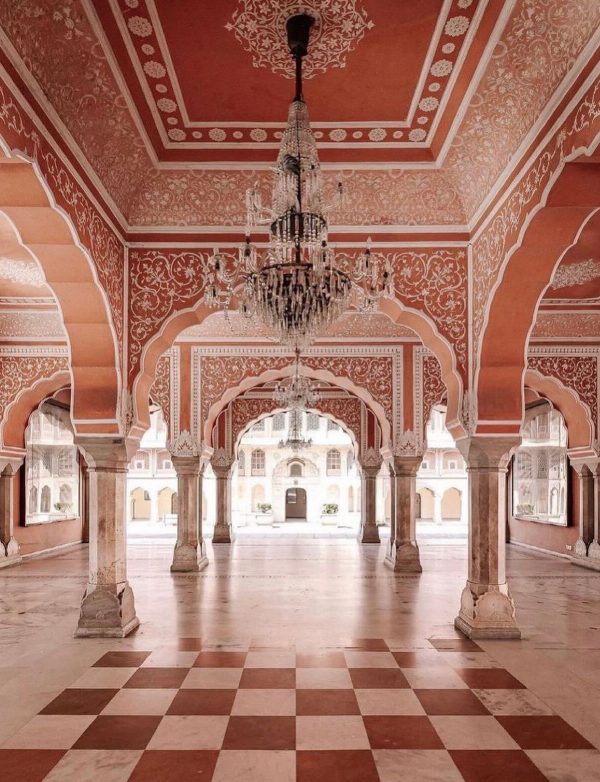There are places that stay with you long after you leave. For me, Jaipur is one of them. The city’s vibrant layers of tradition, craftsmanship, and history are more than just beautiful to behold—they are deeply formative.
As someone whose roots trace back to India, I find myself continually inspired by the intersection of heritage and design that lives within these streets. From the intricacies of ancient havelis to the modern-day artisans keeping centuries-old techniques alive, Jaipur reveals how storytelling is embedded in every tile, texture, and facade.
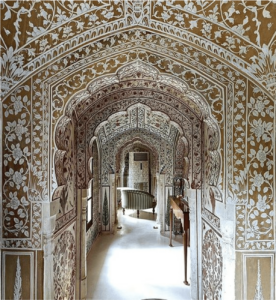
When I travel, I seek places that help expand my creative perspective, and Jaipur does that effortlessly. Amber Fort reminds me how architecture can be both bold and poetic, with sweeping courtyards, carved details, and the seamless blending of Hindu and Mughal design influences. It’s a reminder that the best design is not just about what you see but how it makes you feel. The Hawa Mahal, with its delicate pink latticework and rhythmic windows, was another moment of awe—an expression of both function and beauty that speaks to timeless design philosophies I often draw upon.
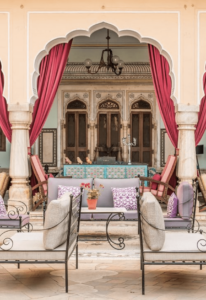
One of the greatest luxuries of traveling through India is being able to stay in heritage properties like Samode Haveli, where every corner tells a story. The richness of cultural expression—from hand-blocked textiles to intricate inlay work—has long informed the way I think about materials, pattern, and craftsmanship in my own interiors and product collections. What we call modern design today owes much to the artisanal legacies of places like this, where making is still deeply sacred.
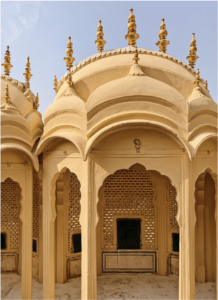
My work is often rooted in duality: the old and new, the raw and refined, the East and West. India is all of that and more. There’s something incredibly powerful about standing in a space that was designed centuries ago and still feeling its relevance today. It affirms my belief that great design is not just aesthetic but soulful—rooted in culture, memory, and emotion.
For those seeking meaningful inspiration, start by immersing yourself in a place that challenges your perspective and stirs your senses. Jaipur is one of those places for me. It is not just a destination—it’s a muse.
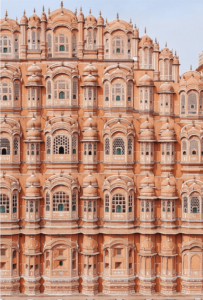
In the markets of Jaipur, I found beauty not only in the finished products but in the process itself. Watching artisans carve marble by hand or mix natural dyes into pools of rich pigment reminded me that design is, at its best, an act of devotion. These moments of intimacy between creator and material show up in my work in subtle ways—a curve of a chair, a softness in a palette, a reverence for texture.
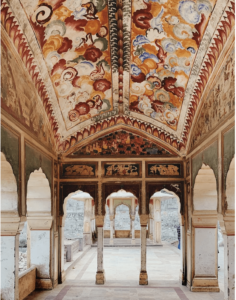
Even the chaos has its place. The layered sounds of the street, the vibrant mix of color and scent, the contrast between stillness and movement—all of it shapes the way I think about balance in space. Luxury design is not about silence or minimalism for the sake of restraint. It is about choosing what to emphasize and allowing every element to speak with purpose.
Traveling through India always sharpens my attention to detail. Whether it’s the hand-painted frescoes of a palace wall or the curve of a ceramic dish in a street-side tea stall, there is a through line of care and intention that I carry back into my design studio. It’s a reminder that the smallest details often hold the most weight.
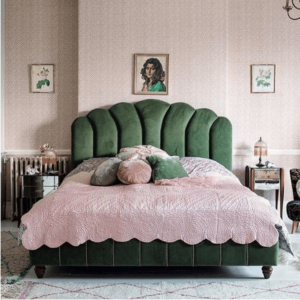
For me, inspiration is not something I passively collect. It is something I actively seek. I walk through cities with a designer’s eye but a traveler’s openness, allowing the unexpected to move me. That combination—intentionality and curiosity—is what allows a place like Jaipur to influence not just what I design, but why I design.
To design well is to remember well. It means holding onto the memory of a carved archway or a morning chai and letting it inform a material choice or a silhouette months later. India offers those kinds of memories in abundance.
